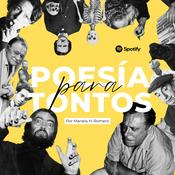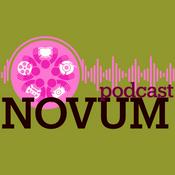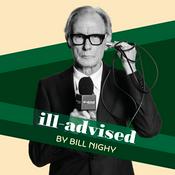Episodios disponibles
5 de 255
- Episode 255: North America’s Invasive Species Double StandardSummary This conversation explores the complex perceptions surrounding invasive species, examining why some are celebrated while others are vilified. The discussion delves into cultural, economic, and ecological factors that shape public opinion, highlighting the role of narratives and emotional responses in determining the status of various species. The hosts also reflect on the implications of these perceptions for wildlife management and conservation efforts. - Leave a Review of the Podcast - Buy our Wild Fish and Game Spices The Art of Venison Sausage Making Links: Invasive Species Shirts and Stickers Takeaways: Invasive species are often judged through cultural, economic, and ecological lenses. Public perception can overshadow actual ecological impacts of species. Some introduced mammals are celebrated while others are seen as pests. Birds face an identity crisis as some are revered while others are loathed. Fish species are often categorized as beloved or villainous based on public sentiment. Utility and economic value play significant roles in species perception. Narratives surrounding species can influence their acceptance or vilification. Once labeled as invasive, species struggle to change public perception. Cultural traditions can shape how we view certain species. It's important to question our biases towards invasive species. Chapters: 00:00 The Villainization of Invasive Species 03:04 Cultural and Economic Perspectives on Invasive Species 04:53 Mammals: Heroes and Villains 22:33 Birds: The Identity Crisis of Invasive Species 26:45 The Journey of Feral Chickens 33:38 The Double Standard of Fish Species 41:10 Perception and Acceptance of Invasive Species 46:25 Conservation and Culinary Solutions Keywords: Invasive species, ecology, culture, hunting, perception, mammals, birds, fish, conservation, wildlife management Learn more about your ad choices. Visit megaphone.fm/adchoices--------46:15
- Episode 254: The Best Wild Game Recipes for the HolidaysSummary In this conversation, Justin Townsend and Adam Berkelmans explore the creative and experimental aspects of cooking, particularly focusing on unique roasts that combine various meats. They discuss the idea of a 'Frankenstein roast' and encourage adventurous cooks to embrace the unexpected in their culinary endeavors. - Leave a Review of the Podcast - Buy our Wild Fish and Game Spices The Art of Venison Sausage Making Links: Adam’s Guide to Making a Venison Sirloin Tip Roast Brad Trumbo’s Guide to Making a Sous Vide Venison Roast Dustyn Carroll’s Recipe for a Slow Cooked Venison Shoulder Roast with Veggies Justin’s Guide for Making a Neck Roast in the Slow Cooker Chase Waller’s Wine-Braised Antelope Shoulder Roast Recipe Justin’s Indigenous-Inspired Recipe for Juniper Braised Arm Roast with Wild Mushrooms and Hominy Justin’s Guide to Making the Best Mississippi Pot Roast from Scratch - No Store-Bought Fillers! Justin’s Citrus Smoked and Braised Venison Shanks Natalie Auer’s Marry-Me Venison Shank Osso Buco Don’t Forget New Years! Justin’s Hoppin John with Venison Shank Amanda Altman’s Venison Wellington Recipe Jeff Benda’s Jackalope Wellington Recipe, Made with Pronghorn and Jackrabbit Brandon Dale’s Beer Can Smoked Venison Crown Roast Recipe Adam’s Guide to Making a Turducken Brandon Dale’s Teriyaki Glazed Duck Quincy Milton’s Smoked Duck with Apple Maple Mop Sauce Amanda Altman’s Spicy Pomegranate Glazed Duck Adam’s Guide to Spatchcocking, Dry-Brining, and Roasting a Turkey to Perfection Matt Dollenbacker’s Recipe for Smoked Carp Dip Dustyn Carroll’s Recipe for Mushroom Stuffed Venison Tenderloin Adam’s Recipe for Seared Mallard Breasts with Stewed Plums Danielle Prewet’s Dijon Roasted Hungarian Partridges Justin’s Wild Turkey Breast Kiev Adam’s German Christmas Goose Breast for Two Recipe Justin’s Roasted Quail with Corn Bread Stuffing Adam’s Beer-Braised Goose Legs on Egg Noodles with Red Cabbage Ben Burgholzer’s Pan Roasted Halibut Over Wild Mushroom Risotto Lindsey Bartosh’s Venison Steaks with Whiskey Cream Sauce Justin’s Seared Duck Breast with Pumpkin Cream Rigatoni Lindsey Bartosh’s Pheasant Pumpkin Cornbread Stuffing Gunnar Emberg’s Wild Game Sausage Stuffing Adam’s Hen of the Woods and Wild Rice Autumn Salad Adam’s Baked Wild Mushroom Rice Adam’s Baked Black Walnut Brie in Puff Pastry Adam’s Guide to Making Your Own Spruce Tip Syrup Brandon Dale’s Recipe for Wild Sumac Negronis Takeaways: Culinary experimentation can lead to unique and memorable dishes. Combining different meats can create exciting flavor profiles. Creativity in the kitchen is essential for culinary growth. Not every experiment will succeed, but the journey is valuable. Embracing the unexpected can lead to culinary fame. Beginners should start with simpler recipes before experimenting. The concept of a 'Frankenstein roast' embodies kitchen creativity. Cooking is as much about science as it is about art. Adventurous cooking can inspire others to try new things. Every great chef has had their share of kitchen failures. Keywords: Cooking, culinary experimentation, roast, kitchen science, venison, elk, antelope, caul fat, creativity in cooking Learn more about your ad choices. Visit megaphone.fm/adchoices--------45:55
- Episode 253: Why Hunters Value the First Meal After the HuntSummary In this episode, Justin Townsend and Adam Berkelmans dig into the ancient first bite traditions of hunting—those raw, fire-lit moments when hunters taste the animal they’ve just harvested. They explore the history, meaning, and modern interpretations of eating heart, liver, or tenderloin in the field, weaving in cultural rituals, practical cooking tips, and stories that reveal why this primal meal still matters today. - Leave a Review of the Podcast - Buy our Wild Fish and Game Spices The Art of Venison Sausage Making Links: The Perception of the Environment The Best Venison Heart Recipe: Japanese-Inspired Heart Skewers Curried Steak and Kidney Pie Making Memorable Meals in the Field Egyptian Duck Liver Sandwiches (Kebda Eskandarani) Takeaways: The first bite after a hunt is more than a meal, it’s a moment of gratitude, connection, and respect for the animal and the land. Across time and cultures, hunters have shared this ritual, turning survival into ceremony and instinct into reverence. Ancient traditions from the Arctic to Africa reveal that eating first is both a form of nourishment and a homage to the hunt itself. The practice carries four meanings: practicality, honor, connection, and gratitude. Organ meats, such as heart and liver, spoil quickly, making them both a practical and symbolic choice for the first meal. The act of eating first honors the hunter’s effort and courage while recognizing the life taken. It also deepens the connection between hunter, animal, and environment, reminding us that hunting is part of a shared cycle. Gratitude transforms the meal into a moment of reflection, reinforcing respect over pride. Modern hunters continue the ritual through simple, fire-cooked meals in the field. A tenderloin or heart sizzling over a campfire carries as much meaning today as it did thousands of years ago. These first meals are often cooked with minimal tools—just salt, oil, and flame, proving that simplicity carries the most authenticity. A fresh-cut organ or tenderloin eaten outdoors becomes a lasting memory of the hunt and a story worth retelling. The episode also explores how social media and trophy photos can blur the line between respect and display. Cooking in the field brings the focus back to purpose, humility, and connection instead of validation. Adam and Justin share their own first-bite experiences, from heart skewers to quick tenderloin tacos, proving that ritual and flavor can coexist. They encourage hunters to start or revive their own first-bite traditions, turning every harvest into a meal that matters. Keywords: Gall, taste, unconventional flavors, food science, culinary exploration Learn more about your ad choices. Visit megaphone.fm/adchoices--------55:24
- Episode 252: Wild Food Horror Stories, Legends, and MythsIn this conversation, Justin Townsend and Adam Berkelmans explore the haunting aspects of wild food, sharing real-life horror stories that highlight the dangers of foraging and hunting. They discuss the importance of caution, the role of superstitions and cultural taboos in hunting practices, and how these beliefs often stem from historical survival strategies. The conversation delves into the intersection of science and folklore, emphasizing the need for respect towards nature and the lessons learned from past generations. - Leave a Review of the Podcast - Buy our Wild Fish and Game Spices The Art of Venison Sausage Making Articles: The Little Dangers Alpha-Gal Syndrome: The Red Meat Allergy from a Tick Bite Takeaways: There's something ancient about the fear we feel in the dark woods. Real stories of misidentification, misfortune, and mystery exist in wild food. One error in the wild can end everything. Ciguatera poisoning is a hidden danger in seemingly perfect fish. The wilderness doesn't need monsters to strike fear into you. Superstitions and rituals in hunting can provide a sense of control. Cultural taboos often have roots in survival science. The wild has rules that are written in blood, not ink. Respect for nature is crucial for survival in the wild. The importance of caution cannot be overstated when foraging or hunting. Chapters: 00:00 The Ancient Fear of the Dark Woods 01:03 Real Wild Food Horror Stories 02:10 Tales of Misfortune and Mystery 05:39 The Hidden Dangers of the Wilderness 09:34 Superstitions and Rituals in Hunting 10:48 Cultural Beliefs and Food Traditions 15:59 The Influence of Nature on Hunting Practices 22:22 The Influence of Moon Phases on Hunting 24:21 Rituals and Superstitions in Hunting 27:28 Cultural Taboos and Their Origins 30:22 Survival Science Behind Food Taboos 33:29 The Thrill of Dangerous Foods 36:23 Respecting Nature and Ancestral Knowledge 39:21 The Importance of Caution in the Wild 41:43 Spooky Stories from the Field Keywords: Wild food, hunting, folklore, superstitions, nature, food safety, horror stories, cultural taboos, survival, respect for nature Learn more about your ad choices. Visit megaphone.fm/adchoices--------40:37
- Episode 251: Edible Invasive Plants & Fungi You Should Be CookingThis episode explores the world of invasive edible plants and fungi, focusing on species like garlic mustard, kudzu, Japanese knotweed, and burdock. The hosts discuss their origins, ecological impacts, and how to responsibly forage and prepare these plants for sustainable meals. The conversation emphasizes the importance of proper identification and safety when foraging, while also sharing cooking tips and recipes. In this conversation, Justin Townsend and Adam Berkelmans delve into the world of foraging and cooking with invasive species. They explore the culinary potential of burdock, dandelions, Himalayan blackberries, and golden oyster mushrooms, discussing their flavors, nutritional benefits, and recipes. The discussion emphasizes the importance of culinary conservation and how foraging can contribute to ecosystem health. - Leave a Review of the Podcast - Buy our Wild Fish and Game Spices The Art of Venison Sausage Making Recipes: Wild Greens Mac and Cheese Stuffed Kudzu Leaves Barbecue Dolmas Stuffed with Bacon Beef and Cheese Japanese Knotweed Cake with Streusel Topping Summer Wild Vegetable TempuraHow to Make Dandelion Jelly Dandelion and Zucchini FrittersStewed Dandelion Greens with Chickpeas and ‘NdujaVenison Steak with Blackberry Sauce and Corn Salad Cacio e Pepe with Wild Pork Sausage and Oyster Mushrooms Takeaways: Invasive plants can be turned into sustainable meals. Garlic mustard is edible at every stage of growth. Kudzu grows rapidly and is edible in various forms. Japanese knotweed can be used in desserts and jams. Burdock root is rich in fiber and antioxidants. Proper identification is crucial when foraging. Invasive species can have significant ecological impacts. Foraging can help control invasive plant populations. Cooking with invasive plants can be delicious and eco-friendly. Community resources and local foraging groups are invaluable. Burdock requires effort to harvest but is versatile in cooking. Dandelions are nutritious and can be used in various dishes. Young dandelion leaves are best for salads, while mature ones are great sautéed. Dandelion jam is a delightful treat reminiscent of sunshine. Himalayan blackberries are delicious but invasive, dominating the West Coast. Eating invasive species is a form of stewardship for the land. Culinary conservation encourages conscious eating and seasonal food sourcing. Chapters: 00:00 Introduction to Invasive Edibles 01:20 The Impact of Invasive Plants 03:15 Garlic Mustard: The Ecological Villain 11:25 Kudzu: The Vine That Ate the South 18:00 Japanese Knotweed: A Destructive Invader 25:11 Burdock: The Versatile Root Vegetable 27:36 Exploring Burdock: A Culinary Gem 30:00 Dandelions: The Ubiquitous Superfood 39:41 Himalayan Blackberries: A Sweet Invasive Delight 45:01 Golden Oyster Mushrooms: A Culinary Invasion 50:02 Culinary Conservation: Eating for the Ecosystem Keywords: Invasive plants, edible plants, foraging, ecological eating, sustainable meals, garlic mustard, kudzu, Japanese knotweed, burdock, wild foods, burdock, dandelion, Himalayan blackberry, golden oyster mushroom, invasive species, culinary conservation, foraging, wild food, sustainability, nutrition Learn more about your ad choices. Visit megaphone.fm/adchoices--------50:44
Más podcasts de Arte
Podcasts a la moda de Arte
Acerca de Wild Fish and Game Podcast
Join Justin Townsend and the Harvesting Nature Crew as they guide you through the world of cooking wild fish and game meat, their adventures to obtain food, and the lessons learned along the way. They are also frequently joined by some of the most influential people in the world of wild food to dive deep into food conversation to positively promote the lifestyle of harvesting, cooking, and eating wild food.
Harvesting Nature is a media outlet with the main focus to educate and inspire those wishing to live the outdoor lifestyle with a focus of hunting, foraging, and fishing for food. Follow along with us as we help you Find your Wilderness.
Please reach out with questions and comments to [email protected]
Sitio web del podcastEscucha Wild Fish and Game Podcast, Bibliotequeando y muchos más podcasts de todo el mundo con la aplicación de radio.net

Descarga la app gratuita: radio.net
- Añadir radios y podcasts a favoritos
- Transmisión por Wi-Fi y Bluetooth
- Carplay & Android Auto compatible
- Muchas otras funciones de la app
Descarga la app gratuita: radio.net
- Añadir radios y podcasts a favoritos
- Transmisión por Wi-Fi y Bluetooth
- Carplay & Android Auto compatible
- Muchas otras funciones de la app


Wild Fish and Game Podcast
Escanea el código,
Descarga la app,
Escucha.
Descarga la app,
Escucha.



































